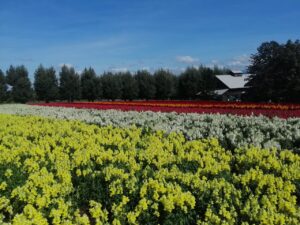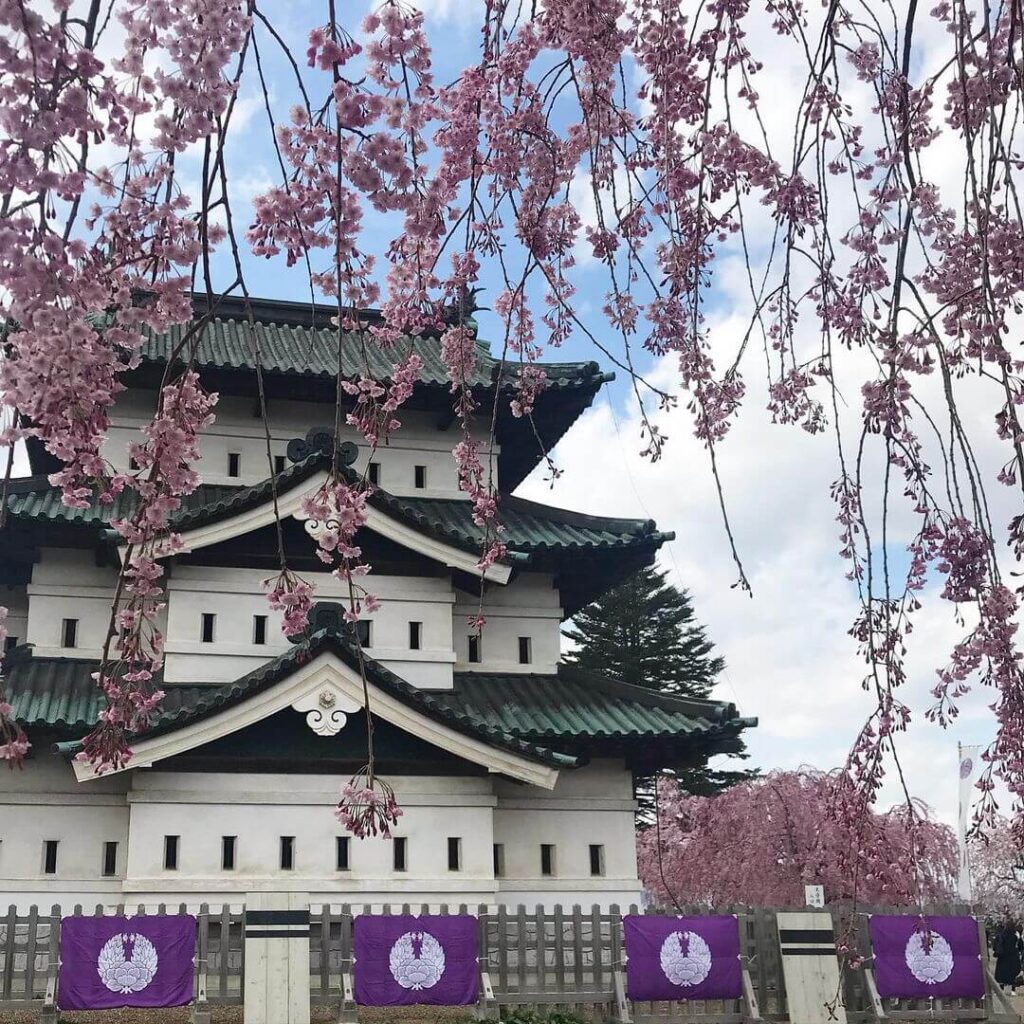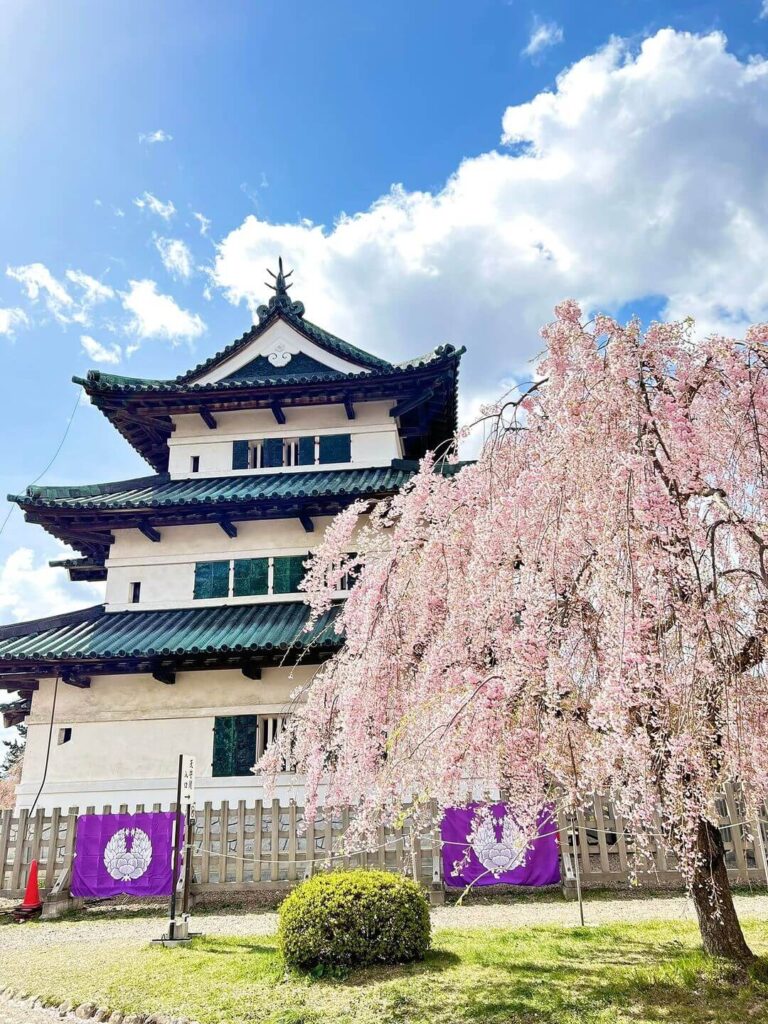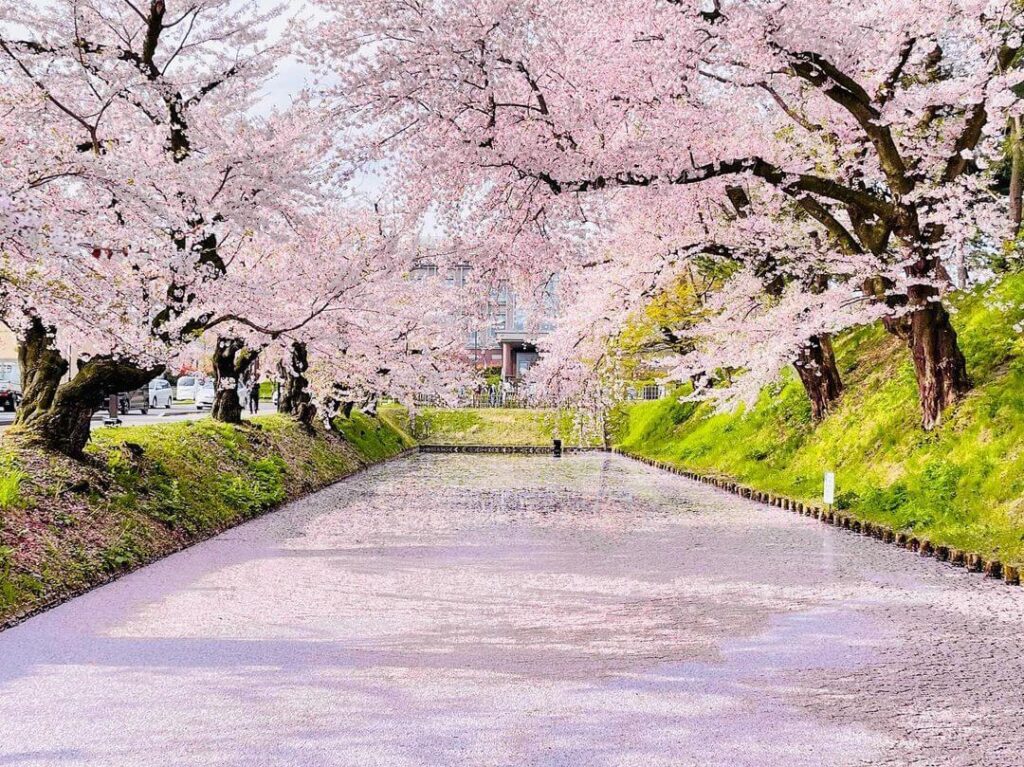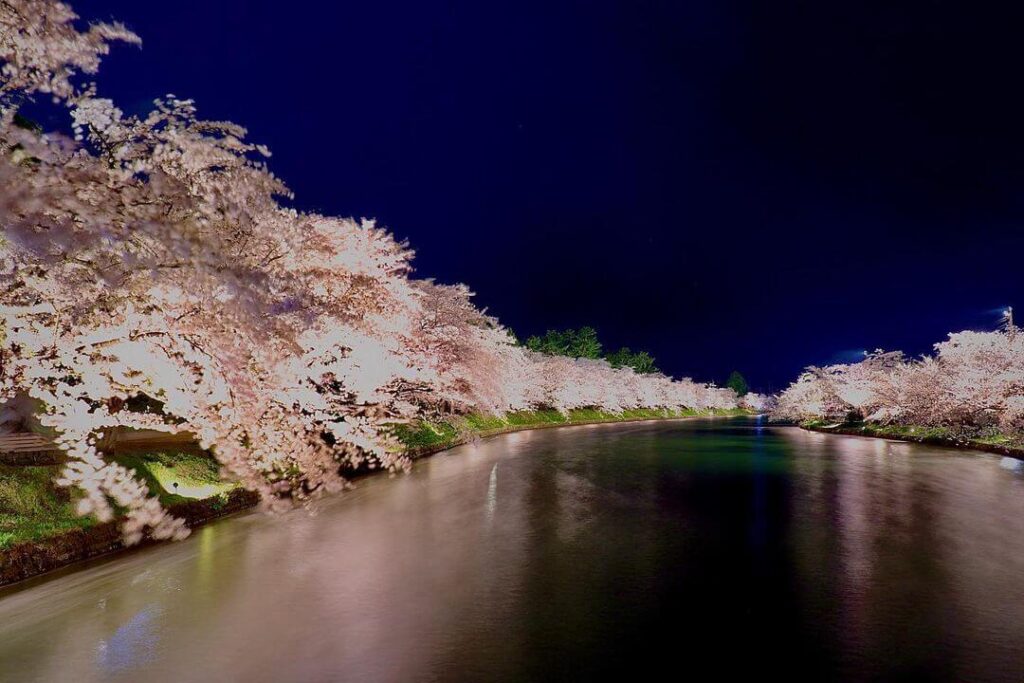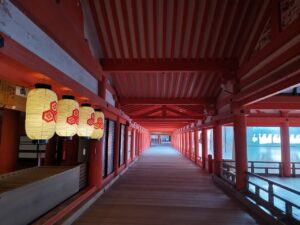弘前公園 (Hirosaki Park) and 弘前城 (Hirosaki Castle) are two of the most popular tourist attractions in Aomori Prefecture, Japan. The park and castle are located in the city of Hirosaki, which is known for its rich history, culture, and beautiful natural scenery. 弘前城 (Hirosaki Castle) is a historic castle that was built in 1611 by the Tsugaru clan, a powerful samurai clan that ruled the Hirosaki region during the Edo period (1603-1868). The castle was built as a defensive fortress to protect the region from invaders, and it was strategically located at the base of Mount Iwaki, one of the tallest peaks in the region. The castle is known for its distinctive architecture, which combines Japanese and Western elements. The main keep of the castle is a three-story wooden structure, with each floor serving a different purpose. The first floor was used for storage and administration, the second floor was used for the lord’s living quarters, and the third floor was used as a lookout and defensive position. The castle was also known for its beautiful gardens, which were designed to reflect the changing seasons. The gardens were carefully tended by the castle’s inhabitants, and they included a variety of trees, plants, and flowers that were native to the region. In 1627, a devastating fire destroyed much of the castle and the surrounding area. However, the castle was rebuilt over the next several decades, and it remained an important political and cultural center for the region throughout the Edo period. In 1871, the Meiji government abolished the feudal system and the Tsugaru clan was forced to give up the castle. The castle was later donated to the city of Hirosaki, and it was opened to the public as a historic site in 1894. Today, Hirosaki Castle is one of the most popular tourist attractions in Aomori Prefecture. The castle is open to the public year-round, and visitors can explore the castle’s interior, climb to the top of the main keep, and enjoy the beautiful gardens. 弘前公園 (Hirosaki Park) is a public park that surrounds Hirosaki Castle. The park covers an area of 49.1 hectares and includes a variety of trees, plants, and flowers that were carefully selected to reflect the changing seasons. The park is known for its cherry blossoms, which bloom in early spring and attract thousands of visitors from all over Japan. The cherry blossom trees in Hirosaki Park were first planted in 1903, and they have since become one of the most famous cherry blossom viewing spots in the country. In addition to the cherry blossoms, Hirosaki Park is also known for its beautiful autumn foliage. The park is home to over 2,600 apple trees, which turn a brilliant shade of red and orange in the fall. The park also includes several ponds, waterfalls, and bridges, which add to its natural beauty. Visitors can explore the park’s many walking trails, relax on the grassy lawns, and enjoy a picnic in the shade of the trees. One of the park’s most popular attractions is the Hirosaki Cherry Blossom Festival, which takes place every year in late April. During the festival, the park is illuminated at night, creating a magical atmosphere that attracts visitors from all over the world. In addition to the cherry blossom festival, the park also hosts several other events throughout the year, including a summer festival, a chrysanthemum festival, and a winter illuminations event. Both Hirosaki Castle and Hirosaki Park are important cultural and historical landmarks in Aomori Prefecture. They are a testament to the region’s rich history and natural beauty, and they offer visitors a unique opportunity to explore Japan’s cultural heritage. In recent years, the city of Hirosaki has made significant efforts to promote tourism in the region. The city has invested in new infrastructure, such as a modern train station and improved road networks, to make it easier for visitors to access the area. In addition, the city has worked to expand its tourism offerings, with a particular focus on eco-tourism and cultural experiences. Visitors to Hirosaki can now participate in a wide range of activities, including hiking, cycling, hot spring tours, and traditional Japanese cultural experiences such as tea ceremonies and kimono dressing. These efforts have paid off, with the number of tourists visiting Hirosaki increasing steadily in recent years. In 2019, over 1 million tourists visited Hirosaki, a record high for the region. However, the increasing number of tourists also presents challenges for the region. There is a risk of overcrowding and damage to the natural and cultural resources in the area. To address these challenges, local authorities and conservation organizations are working to promote sustainable tourism practices and limit the impact of human activity on the ecosystem. For example, the city has introduced measures to manage the flow of visitors during peak seasons, such as setting up a reservation system for the cherry blossom festival. The city has also implemented sustainable tourism initiatives, such as promoting the use of eco-friendly transportation and encouraging visitors to use reusable water bottles. In conclusion, 弘前公園 (Hirosaki Park) and 弘前城 (Hirosaki Castle) are two of the most iconic tourist attractions in Aomori Prefecture, Japan. They are a testament to the region’s rich cultural and natural heritage and offer visitors a unique opportunity to explore Japan’s history and culture. As the number of visitors to the region continues to increase, it is important that local authorities and conservation organizations work together to promote sustainable tourism practices and protect the region’s natural and cultural resources for future generations. With careful planning and management, we can ensure that Hirosaki remains a vibrant and sustainable tourism destination for years to come.
